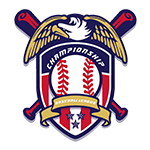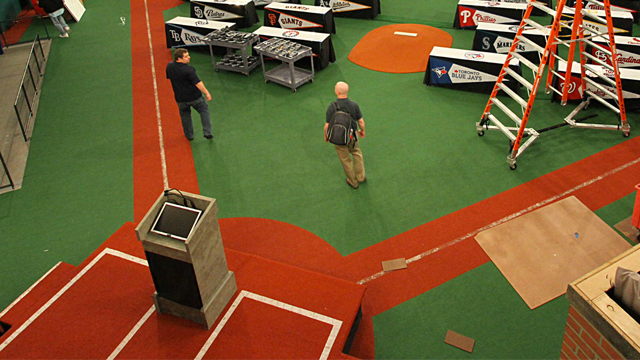2058 Draft: Live Updates
After a historically bad 2057 draft class, teams look towards the future by selecting the next stars in the 2058 draft. As the picks go live we will update here:
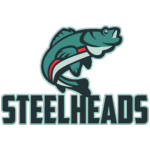
1st Overall – SP Dave Knippen, Cochise College
Knippen is the safest starter in the draft, though may not have the best career when all is said and done. As the NJCAA Pitcher of the Year, beating out fellow top pick Jason McLaughlin, Knippen posted a 2.09 ERA over 10 starts with an ERA+ of 261. Ready to start in the majors right away, Knippen will provide a boost to an already good rotation for Seattle that is looking to get promoted out of the Bronze League for the first time since 2055.
Knippen’s top pitch is his changeup, which is amongst the best in the league. He couples that with a decent cutter, decent forkball, and a slider that is an additional fourth pitch. The 6’1″ right hander joins Keith Givens and Brian Monk in the rotation to round out Seattle’s pitching staff. He is OSA’s #4 prospect.

2nd Overall – CF John Bledsoe, Cochise College
John Bledsoe is OSA’s #1 prospect in the draft, and he comes with all the tools to be a future all star. Good range and great speed allows him to patrol center field, making his bat even more valuable. In his three years in the NJCAA, he never hit below 16 home runs in a season, and never had an OPS+ below 161, and won the NJCAA player of the year in 2056 as a sophomore. Plus power and pitch selection allows him to get on base often, and he will likely contend for stolen base titles due to it – if he’s not hitting home runs instead.
Matt Hendershot, Tampa’s 4th overall selection two years ago, has been loaned off to Atlanta but provides the Palms with a compelling outfield situation with John Carlin in right field (12th overall in 2055). Currently in third place in the Bronze League, Tampa could see themselves as one of the favorites for promotion for the next season with the addition of some more pitching.
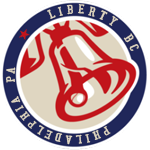
3rd Overall – 3B Kyle Mauller, Grayson College
Philadelphia has 3B Chase Qualls aging – and Mauller is almost a carbon copy comparison to Qualls, just much younger. Mauller is almost fully ready for major league service and is the safest pick for an all around producer in the draft – while he may not have the ceiling that John Maynard has, the floor is most certainly there for Mauller. While not doing anything exceptionally well, he doesn’t do anything bad – he’ll provide a 115 OPS+ while playing passable defense at third base. Qualls has 20.5 WAR over his nine year career, and that number over nine years is not out of the question for Mauller – and that would certainly be a good return for a third overall pick.
Mauller is Philadelphia’s third batter selected in the first round (the last being Ryan Van Valkenburgh in 2055). With the farm system full of pitching depth, including the #1 BL prospect in SP Pearce Andrew, Mauller makes a useful pick for a Philadelphia team looking to find its way back to the Premier League.
Mauller checks in as OSA’s #3 prospect.

4th Overall – LF John Maynard, Grayson College
Maynard is a unique talent that has problems in certain areas of his game, but should be the most exciting position player to watch out of this draft. With very good range for left field, and very good speed, Maynard rivals John Bledsoe – in fact, both are almost the exact same player when it comes to speed and fielding. What separates the two is the batting ideology. Maynard has a powerful bat and will likely challenge for some home run crowns, but at the same time has a serious problem with strikeouts and will have issues hitting for a good average (which will effect the rest of his game). He also has serious issues facing left handed pitching, and will likely immensely struggle late in games should a team match up left on left. Even with all those faults, however, Maynard will contribute to a team and provide star power that Minnesota is looking for.
It may not be out of the question to see Maynard be called up immediately to relieve the left field position vacated by Justin Barnett’s injury. Minnesota’s history has been to draft pitchers high, then batters as the rounds progress – Maynard is a unique talent to buck that trend, however.
Maynard is OSA’s #2 prospect.
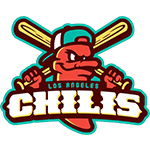
5th Overall – SP Jason McLaughlin, Yavapai College
McLaughlin may wind up as the best pitcher to come out of the draft, and he falls into the Chilis’ laps at fifth overall. He struggled in the NJCAA ranks this year, coming out with a 4.04 ERA through 10 starts, but the rate stats – K/9 of 12.9, BB/9 of 2.1, and HR/9 of 0.5 all shows the keys to a dominant starter. He flashes pinpoint accuracy on good stuff, with a fastball/slider/changeup/forkball combination that are all plus pitches, with an additional curveball. If he reaches his potential McLaughlin could find himself on the winning end of some Pitcher of the Year awards in the future.
Despite being OSA’s #5 prospect, LA should be extremely happy that McLaughlin fell. Aside from last year’s first round pick of Josh Hanneman, the previous four starting pitchers that LA drafted are currently starting on other teams. With three good pieces in the lineup, along with two good starting prospects in Dick Greenberg and Kirk Sheppard, McLaughlin should provide the Chilis with the ace needed to proceed into postseason competition.
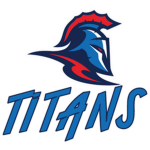
6th Overall – LF Chris Brock, Oregon
Chris Brock features one of the best eyes for drawing walks in the game and hasn’t even left college yet. In college, his OBP was roughly .120 higher than his average due to the sheer number of walks he drew against pitchers. Combine that with a decent swing that has some power behind it, and you’re looking at a switch hitting machine who will get on base at an elite clip. Brock does have some pronounced weaknesses, however – once he gets on base he becomes a roadblock despite his good speed – his baserunning IQ is very low, and his defense will leave something to be desired. Still, for a team that is looking to get guys who get on base, Brock is as close to perfect for that role you’ll find in this draft.
Vancouver hasn’t had too many first round picks – in fact, this pick isn’t theirs, but instead acquired from DC in exchange for signing RF Jerry Tinoco – so any talent coming in is a welcome sign for Vancouver. Pairing him with star LF Tim Bernard should give the Titans a useful lineup that will outslug the opposition, helping them get out of the Bronze League for the first time in eight years. Brock is OSA’s #13 prospect.

7th Overall – C Jon Rodriguez, Phoenix Muskets (BR-16)
The first non-college player goes off the board at 7th overall to DC, but Rodriguez’s plate production makes it a sufficient risk. If DC can maximize Rodriguez’s potential, only New York’s top prospect Mike Stafford will finish with a better bat at the catcher position. Rodriguez features no real weaknesses at the plate, which, for a catcher, is something rarely seen. Rodriguez does have some weaknesses though – most notably running speed (though that may be expected at the position), and his defense behind the plate could be a little better. Still, while he doesn’t specialize in anything, Rodriguez will likely find himself winning a few Coke Blak surge awards in the future at the catcher position, provided him and Stafford aren’t in the same league. He is OSA’s #8 draft prospect.
DC finds themselves at the beginning of a long rebuild, and Rodriguez fits the type of player that such a team might expect to draft – young, yet talented who could produce in the future. DC generally does not pick hitters in the first round – in fact, this is the first hitter taken in the 1st since Chris Chatwin in 2053 – though the addition of high overall picks may change that trend.

8th Overall – SP Jaylen Grant, Laredo College
Grant righted the ship after a disastrous 2057 college season by finishing second in the Pitcher of the Year vote this season, losing only to first overall pick Dave Knippen. An extreme groundball pitcher, Grant features a decent sinker and a good curveball and changeup to induce his 64% ground ball rate. A crafty left handed starter, Grant will turn 22 in a couple of days and may be headed straight to Los Angeles, as he is major league ready.
After selecting McLaughlin with the 5th overall selection, LA finishes their rotation by selecting Grant here. With the shoebox ballpark LA plays in, Grant may be the needed pitcher to help keep the ball down and playable for the LA fielders. He is OSA’s #9 prospect.

9th Overall – SP Chad Green, Oregon State
Green is another one of the major league ready starters that this draft is providing, this time as a 6’2″ right hander with a nasty changeup. He’s finished high in award voting before in the NCAA ranks, finishing 3rd in 2056 and 2nd in 2057 in Pitcher of the Year rankings, both years having an ERA+ above 200. He may have trouble translating those results over to the major leagues however – many scouts put him as an inning eater starter at best (which he will be good at, having one of the best stamina arms in the draft), but not much more. OSA has him as their #60 draft prospect.
It is understandable for Mexico City to go after Green in their spot, however – trying to get anything out of the lineup they have with Keegan Shaheen, Cesar Velasquez, Raul Villalba, and Mario Hernandez, each stars in their own right. The pitching, however, has not been there. Outside of ace Ricardo Vargas, their starter’s ERAs are 5.37, 5.10, 4.89, and 8.58 in the Bronze League. They need pitching, badly, and seeing the top starters go off the board leaves them in a tough spot – reach for a pitcher or get yet another bat into that lineup when one of those is badly needed. Ultimately, they went with the pitching route – let’s see if it pays off.

10th Pick – 2B Doug Hinson, Cochise College
Doug Hinson is OSA’s #15 draft prospect, though the 10th pick seems about right for the former Cochise College standout. Hinson comes with all the bells and whistles wanted with a second baseman, including a good glove, great speed, and a good contact/low strikeout approach at the plate. While he may not draw many walks or hit many home runs, Hinson will find ways to get on base and use his speed to create havoc on the basepaths.
For Detroit, however, Hinson looks like the future shortstop of the Motors. With both Byron Arnold and Victor Corral getting old, Hinson provides the youth that Detroit would want for the infield anchor. Konstantin Peters, a top IAFA signing and the #12 PL prospect, should see time anchoring second base for the Motors. Without the need for starting pitching help – they have Bill Rose, Bobby Teneyck, and Giel Barrett all ready to contribute as aces – the Motors were free to pick one of the best bats left in the draft.

11th Pick – LF Barry Saxton, Toronto Nobles (PL-14)
When you have such a farm system as Houston, picking the best player available – irregardless of how young they are – is a luxury a team can afford. Barry Saxton may not hit the ball very often, but when he does, the ball travels. He also draws a ton of walks, and in his age 12 season, he walked 56 times and struck out 55 times. A modern day Adam Dunn, Saxton can play some left field, though his time will likely be spent as a DH. The key for Saxton will be to improve his bat control, focusing on making more contact with the ball to avoid striking out a ton – which will likely be his main issue at the plate.
But that would cut down on his home runs, which are, again, monstrous and often.
Houston’s pick of the #7 draft prospect at 11 shows again how often Houston is able to find the players that are falling and draft them. It may take Saxton a while to develop, but he could be the future replacement for the second overall pick in the inaugural draft in Sam Perez.

12th Pick – RF Preston Pemberton, Texas
Preston Pemberton is another one of the three true outcomes batters that comes in the draft. He will hit a lot of home runs, draw a ton of walks, and strikes out a lot – but, unlike a lot of other three true outcomes batters, Pemberton is able to play good defensively. This is especially important in a Galveston system that forces their fielders to be rangy and good at stopping plays, leading to their #1 rankings in both runs for and runs against.
Galveston acquired this pick in a deal that sent SP Juan Nieves to Kentucky. The Galveston farm system features primarily starting pitching, having dealt away many of their big name hitters (notables include 1B Javy Rodriguez and SS Juan Salazar, among others). Pemberton comes in and immediately provides another bat in the farm for Galveston to call upon should an injury occur. He is OSA’s #14 draft prospect.
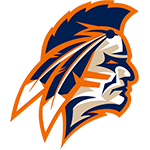
13th Pick – SP John Nothstine, Louisiana State
Nothstine rocketed up draft boards this year as his breakout season won him the 2058 NCAA Pitcher of the Year award. Finishing with a 222 ERA+ and a 2.26 ERA over 11 starts, Nothstine had an 11.2 K/9 and a minute 1.7 BB/9. Once again part of the major ready starting pitchers, Nothstine features a fastball/curve/change/splitter repertoire with all four pitches being plus pitches. The six foot righty also has very good stamina, pitching late into games multiple times, and is able to hold runners very well. OSA has a back-end rotation grade on him, however Nothstine is more likely to finish as a #3 when all is said and done with his development.
Miami picks the #24 OSA prospect to a farm system that needs a shot of youth within its pitching ranks. Outside of Chris Maass and Gustavo Amici, both starters who could anchor most teams’ rotations, the lack of options afterwards is biting them hard in the SL – they are first in runs scored, but rank ninth when it comes to starter ERA. While Nothstine won’t provide much additional help immediately, he can help be another piece in a rotation that desperately needs pieces right now.

14th Pick – SP Joe Marchese, Florida State
